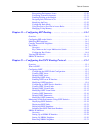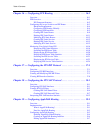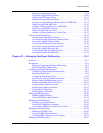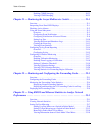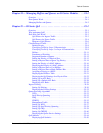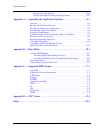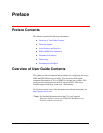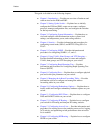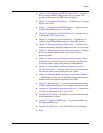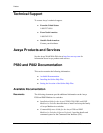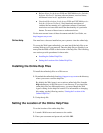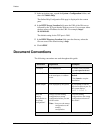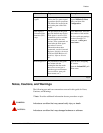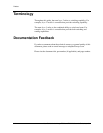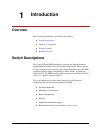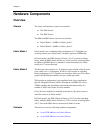
Document No. 10-300077, Issue 2 xix
Preface
■ Chapter 15, Configuring the OSPF Routing Protocol — Explains
how to configure OSPF routing protocol on your switch. Also
provided is information on OSPF statistical displays.
■ Chapter 16, Configuring IPX Routing — Explains how to configure
IPX on your switch.
■ Chapter 17, Configuring the IPX RIP Protocol — Explains how to
configure IPX RIP protocol on your switch.
■ Chapter 18, Configuring the IPX SAP Protocol — Explains how to
configure IPX SAP on your switch.
■ Chapter 19, Configuring AppleTalk Routing — Explains how to
configure AppleTalk parameters and view AppleTalk statistics.
■ Chapter 20, Managing Intelligent Multicasting — Explains how to
configure and manage intelligent multicast sessions on your switch.
■ Chapter 21, Monitoring the Avaya Multiservice Switch — Explains
how to use the Web Agent to assess your switch’s current
operational status.
■ Chapter 22, Monitoring and Configuring the Forwarding Cache —
Explains how to interpret and monitor forwarding operations that
occur in the address cache of the multilayer media modules.
■ Chapter 23, Using RMON and Ethernet Statistics to Analyze
Network Performance — Provides information on how to interpret
the statistics counter values displayed in your switch.
■ Chapter 24, Managing Buffers and Queues on 50-Series Modules
— Explains how to use your switch’s buffer management features to
optimize traffic throughput through the switch fabric.
■ Chapter 25, 80-Series QoS — Provides information about Quality
of Service (QoS) and explains how to configure QoS on the switch.
■ Appendix A, Upgrading the Application Software — Explains how
to update the operational code on your switch.
■ Appendix B, Boot Mode — Explains how to use boot mode on the
Avaya Multiservice switches.
■ Appendix C, Supported MIB Groups — Provides information on
the supported MIB groups.
■ Appendix D, FCC Notice — Provides the FCC notice statement.
■ Index



